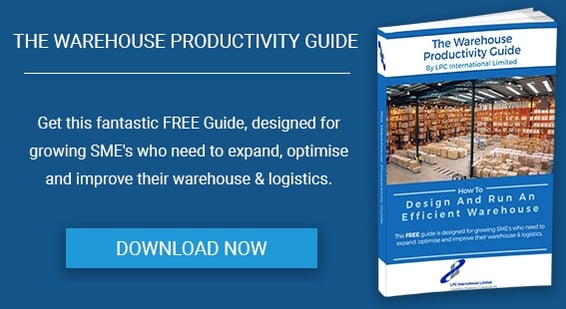
Flaws in warehouse design and layout cost money over the life of the facility. While not every eventuality can be foreseen and prevented, there are some common design mistakes that recur time after time in warehouses all over the world.
1) Inadequate Goods Inward Space
Ideally, the receiving bays should be in a different physical location from the dispatch bays. Otherwise conflicts can occur. If one or more deliveries coincide with attempts to load and dispatch a number of vehicles, then people and goods vie for space, scheduling demands may stretch available personnel, crowding can cause confusion and even represent an H&S risk. A good design allows sufficient space for a receiving area and keeps it separated from the unloading bays.
2) No Thought Given To Picking Paths
Logical picking paths make the job of pickers easier and more efficient. The basic logic is that the picking path should end up very close to the packing and dispatch area, and not at the other end of the warehouse and follow the shortest route possible. Naturally, product mix will change over time but more popular products should be planned to be stored in the same area, as many orders will include them. Allow sufficient space and access for multiple pickers to avoid congestion.
3) Warehouse Workers Not Consulted
The people who know the operation best and what is required are the people who operate the warehouse day in, day out. Not taking their views into account and tapping into their store of knowledge can be a major blunder that happens amazingly frequently. As well as the obvious and preventable resentment generated, the result in many cases is that inefficient processes must be devised to overcome deficiencies in design and layout. In other words, this failure will cost the organisation money every day for the life of the facility.
4) Inadequate Future Planning
It’s impossible to totally future proof a new warehouse but some basic assumptions should be incorporated into the initial designs. Allowing for example, an extra 3m / 10 feet for internal height, even if it’s not justified immediately, could reap dividends if increased capacity is required and higher bays can be installed to cope. Similarly, load bearing elements, such as floors or mezzanine floors should be designed to take account of height available for storage not necessarily that used initially.
5) Forgetting Some Operational Requirements
As well as normal aspects, such as dunnage, packaging materials storage and waste storage areas, a good design will plan for temporary overflow space. Every operation has unexpected events from time to time that require additional storage or assembly space on-site.
6) Inefficient Racking Placement
The most efficient layout for racking bays is normally when they are oriented towards the receiving area. That way, forklift operators have a straight run to take incoming materials to their storage area. Conversely, where the racking is at a 90 degree angle to the run, this can result in slower movement and bottlenecks. It is usual to avoid “dead ending” although compromises are oftern made between efficient movement and storage capacity
7) Wrong WiFi Positioning Or Configuration
When it works smoothly, WiFi is not even noticed and is taken for granted. When glitches occur, the fall-off in productivity can be extremely costly and highly disruptive. As always, IT on the moveis only as good as the signal available. For this reason, it is advisable to engage specialists who have experience of fitting out warehouses and WMS systems in general. Simple aspects, such as installing the correct type of antenna and aligning them the right way, adjusting the power levels to avoid conflicts and so on, all go towards smoothly operating WiFi.
This is a relatively short list of common design failings that can be most easily overcome at the very start. Like many aspects of physical production and supply chain management, taking the time to think things through at the outset pays dividends in terms of performance and productivity rates as time goes by.
Download the free Warehouse Productivity Guide, containing practical advice about warehouse layout strategy, supply chain management, WMS software and more. Click here to access your copy today.


